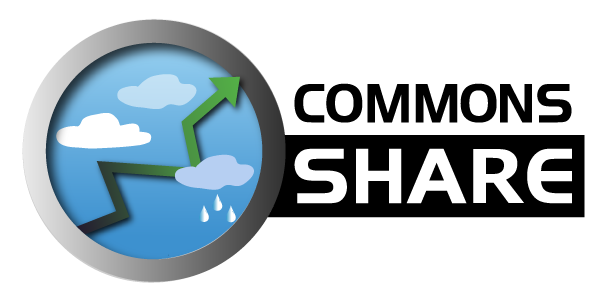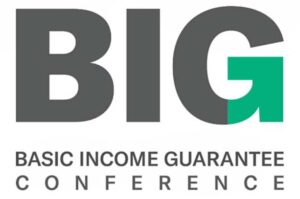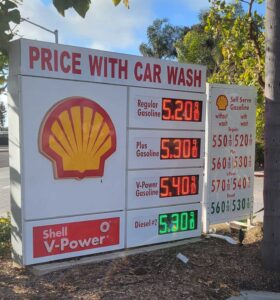
CARBON SHARE ADVOCACY IN CALIFORNIA
Carbon Share’s initial focus has been in California. For an overview of Carbon Share advocacy from 2006-2016, see Ten Years of California Climate Dividends Advocacy Leading to SB775.
The Global Warming Solutions Act of 2006, also called AB32, created a Cap & Trade program and an economywide carbon price. More recently, California passed SB32, which continues the program from 2020-2030.
California’s Air Resources Board (ARB) is the agency responsible for implementing the Cap & Trade rule and related regulations.
The California Public Utilities Commission released a decision in their proceeding on the allocation of allowances in the electric utility sector that returns 100% of proceeds from the electricity sector to ratepayers, and a portion of that is a non-volumetric (equal per households) “climate dividend” rebate. This is the new California Climate Credit, seen as a line-item on utility bills starting in April 2014.
Previously in 2009-2010, the California Air Resources Board received recommendations from their Economic and Allocations Advisory Committee (EAAC). The EAAC recommended dividends, and said, “The largest share (roughly 75%) of allowance value should be returned to California households…”
Carbon Share will continue to encourage California to return the revenues from its carbon price back to people.
RECENT CALIFORNIA NEWS
The Mike Sandler on Center for Climate Protection blog 7-31-17: California’s Cap & Trade program extended: What this means for supporters of climate dividends
Mike Sandler in HuffPost 7-2-17: Climate Justice Groups and Big Oil Agree On Climate Dividends
Center for Climate Protection: What you can do to support SB 775
Mike Sandler in HuffPost 5-18-17: Climate Dividends are for People, Not Corporations (And Other Life Lessons)
Mike Sandler in HuffPost 5-7-17: Ten Years of California Climate Dividends Advocacy Leading to SB775
David Roberts in Vox 5-3-17: California is about to revolutionize climate policy … again “Hegelian synthesis…state of the art.”
MIT Technology Review 5-1-17: California Proposes Ambitious New Cap-and-Trade Program “Around 90 percent of the revenue from the program, which would raise several billion dollars annually and climb steadily over time, would go back to California citizens in the form of a “climate dividend rebate.”
Sacramento Bee 5-1-17: California Senate proposes cap-and-trade overhaul: price limits in, free credits out
CA State Senator Bob Wieckowski (D-Fremont), and Senate President pro Tempore Kevin De León unveil new post-2020 Cap and Trade program creates the California Climate Dividend Fund. (link)
Legislative Analysts Office (LAO): Cap and Trade 2017-2018 Budget Report. Some highlights: (pg. 26) “if a cap-and-trade program is in place, spending auction revenue only on GHG reductions is not necessary to meet the state’s GHG goals and likely increases the overall costs of emission reduction activities. This is because, if the cap is limiting emissions, spending on GHG reductions interacts with the regulation in a way that changes the types of emission reduction activities, but not the overall level of emission reductions…The Legislature could use the funds to (1) offset higher costs for households and businesses associated with higher energy prices by providing tax reductions or rebates, (2) promote other climate-related policy goals, such as climate adaptation activities, and/or (3) promote other legislative priorities unrelated to climate policy. Returning the revenue by reducing other taxes or providing rebates could become even more important if allowance prices increase in the future—thereby increasing energy costs for households and businesses.”
CALIFORNIA CARBON SHARE ADVOCACY ARCHIVE 2006-2016
2016:
Mike Sandler in Huffington Post: For California’s Post-2020 Cap And Trade, Give Money To People
Report by California Legislative Analyst’s Office 1-22-16: Cap-and-Trade Revenues: Strategies to Promote Legislative Priorities
Excerpts: Spending on Capped Sources Likely Has No Net Effect on Overall Emissions. At first glance, subsidizing emission reductions from capped sources might appear to encourage additional emission reductions. However, as long as the cap is limiting emissions from these sources, spending on activities that reduce emissions from these sources will likely have no net effect on overall emissions. As long as the cap is limiting emissions, subsidizing an emission reduction from one capped source will simply free-up allowances for other emitters to use. The end result is a change in the sources of emissions, but no change in the overall level of emissions. Ideally, there would be more direct ways to reduce costs for households. For example, the state could use auction revenue to provide an annual rebate check to California households and/or businesses affected by cap-and-trade. The amount of the rebate could be a lump sum amount not dependent on the household’s energy use. This would maintain the financial incentive to use less GHG-intensive products and meet the state’s climate change goal…Since generating revenue for other state programs is not the primary goal of a cap-and-trade program, the Legislature might want to consider returning most or all of the revenue to households and businesses in the form of rebates or tax reductions. This could be done by issuing a rebate check directly to California households and businesses in an amount not tied to their energy consumption or GHG production, which is similar in concept to the Climate Credit provided to IOU customers. An alternative approach would be to use the funds to reduce taxes.
Contra Costa Times 1-22-16: Report: California should have flexibility to spend cap-and-trade funds
2015:
The transportation fuels sector was phased into the system on January 1, 2015. Will the funds raised be returned to households? So far, the answer is no, with the exception of the California Climate Credit on utility bills twice a year. High speed rail and transit-oriented development are getting hundreds of millions of dollars per year, with questionable results. But ARB continues to refine its Auction Proceeds (link) allocation, and the public continues to have the ability to submit public comment.
Mike Sandler in Huffington Post Green 7-29-15: Five Ways to Improve California’s Cap & Trade System
2014:
Mike Sandler in Huffington Post Green 10-1-14: Expanding on the California Climate Credit
March 21, 2014: California Climate Credit website goes live! The website for the California Climate Credit, as the ratepayer dividend from the electricity sector’s cap and trade revenues will be called, is part of Energy Upgrade California, a brand created by the State to serve as a “one-stop-shop” for energy efficiency and more. The California Public Utilities Commission is overseeing the marketing effort. Read more about the dividend/credit here (link). The Climate Protection Campaign will be starting an outreach effort to encourage recipients of the dividend to donate it to CPC and to other groups that are promoting dividends. You got yours, now let’s help others get theirs! Click here for more information, and to donate to CPC click here.
Links to articles about the credit:
Mike Sandler in Huffington Post Green 4-7-14: Use Your Climate Credit to Ask for More
ClimateProgress blog 3-31-14: California To Start Giving Millions Of Dollars Of Climate Credits To Electricity Users
NRDC blog 3-31-14: Californians to Receive “Climate Credit” from Pollution Permit Sales
San Diego Union-Tribune 3-30-14: April brings electricity ‘climate credit’
Ryan Young and Alex Jackson in SFGate 3-31-14: California climate law is paying off – literally
SFGate 3-30-14: Calif. climate-change fight results in utility bill credits
February 2014: California Senate President pro Tempore Darrell Steinberg (D – Sacramento) proposed removing transportation fuels from the state’s Cap & Trade program under AB32, and instead should add a 15 cent per gallon gasoline tax that would increase over time, return two-thirds of the revenues to low and middle-income families through an Earned Income Tax Credit, and spend the rest on mass transit and similar projects). It’s not exactly a dividend, because it flows through the tax system, and only goes to 75% of families, but it’s on the right track, a whole lot better than Cap & Rail, and raises important issues about addressing income inequality and poverty.
Mike Sandler in Huffington Post Green 2-25-14: State Senator’s Proposal Moves from Cap & Trade to Fee & Rebate
Editorial in the Sacramento Bee supporting Sen. Steinberg’s proposal 3-22-14: A better direction for California’s climate change policy
Editorials opposing Governor Brown’s use of cap and trade funds for high-speed rail from the San Francisco Chronicle 1-10-14 “Cap-and-trade wrong way to fund high-speed rail,” “…what’s emerging is a clear pattern. The cap-and-trade program isn’t supposed to be a slush fund.”, San Jose Mercury News, and Sacramento Bee “Use cap and trade auction process wisely” 1-11-14.
2013:
ARB released a final auction proceeds investment plan to replace the draft investment plan. They accepted public comment for the April 25 public hearing on the use of auction proceeds. Dividends are not a recommended use in the draft plan.
A previous round of comments were solicited for a draft investment plan concept paper at workshops held February 19, 25, and 27 in Fresno, Sacramento, and Los Angeles. Comments may be found here.
Alex Jackson at NRDC 2-22-13: Second Auction Results Show Growing Confidence in California Carbon Market
2012:
First auction takes place November 2012, price floor is key design component.
The first auction of allowances took place on November 14, 2012. ARB official auction results. Articles about the result of the auction are here, and here.
Robert Stavins blog 12-1-12: While International Climate Negotiations Continue, the World’s Ninth Largest Economy Takes an Important Step Forward
Dallas Burtraw on RFF blog 11-20-12: California’s First Carbon Auction Successful
CPUC to return electric sector value as “climate credit.” Down side is it is on-bill, but many upsides.
Electricity sector allowance allocation and revenue use is being decided by the California Public Utilities Commission (CPUC). Link to CPUC proposed decision and the final decision in proceeding R1103012 11-16-12.
Barry Vesser and Mike Sandler in Santa Rosa Press Democrat 2-13-13: Cap and Trade Funds On Way
Mike Sandler in Huffington Post Green 12-5-12: The Birth of Carbon Pricing and Delivering California’s First ‘Climate Dividend’
Alex Jackson at NRDC 12-20-13: California PUC Approves First-of-its-Kind “Climate Dividend” for California Households
Excerpts from the proposed decision:
“At this time, we believe that the distribution of all remaining GHG allowance revenue on an equal per residential account basis, as described in more detail below, ensures the most equitable treatment of residential customers available.” (pg. 131) “Therefore, at least initially, we direct the utilities to return the non-volumetric portion of the residential rebate as an on-bill credit against customers’ electricity bills. If, at a later date, it is found that an off-bill approach achieves substantially greater customer understanding of the Cap-and-Trade program or administrative costs can be substantially reduced, we may reconsider whether an off-bill return is appropriate.” (pg. 136) “…we are not persuaded that it is appropriate to direct GHG allowance revenues towards energy efficiency or clean energy programs at this time. GHG allowance revenues represent a previously unavailable source of money that could be used to fund many programs; however, as articulated by TURN, the funds do not represent “free money.” The revenues created will come directly from the pockets of California ratepayers, many of whom will bear increased retail electricity costs as a result of rising wholesale electricity prices that include the price of carbon.” (pg. 146) Also, note that utilities must provide cash value to net-energy metering customers who would otherwise not receive the credit.
SF Chronicle 11-16-12: Cap and trade may be plum for homeowners describes “electricity bill credit”
SB1018 was signed into law. It will impact the CPUC proceeding. Among other things, (excerpts follow): “this bill would require the Department of Finance, on or before January 10, 2013, to submit a proposed bill to the Legislature that provides a detailed spending plan for the expenditure of moneys from the Greenhouse Gas Reduction Fund, as specified, if the Legislature does not pass a bill, on or before August 31, 2012, that, among other things, specifies a process for the establishment of a long-term spending strategy for these funds…” “..This bill would authorize the PUC to allocate, for specified clean energy programs, up to 15% of the revenues received by electrical corporations as a result of that allocation of allowances and would require the PUC to direct the balance of those revenues to be credited directly to the residential, small business, and emissions-intensive trade-exposed retail customers of the electrical corporations, as specified…” Stay tuned.
Regulation has been adopted, preparing for launch of Cap & Trade system in November 2012, but how to spend revenues still to be determined.
The ARB will develop an investment plan (possibly in consultation with the Governor’s office or Department of Finance) to serve as a proposal to the Legislature about other components.
In February 2012, the Legislative Analyst’s Office issued a report saying that “revenues could be returned directly to Californians – such as in the form of a check – as a dividend that would be intended to offset their increased expenditures on goods and services that ultimately would become more expensive as a result of the cap-and-trade program.”
News and related blogs:
Mike Sandler in Huffington Post Green 5-30-12: Climate Dividends: California’s Chance to Change Hearts and Minds
Reuters 2-9-12: California eyes dividends, deficit cuts from cap-and-trade
California Public Utilities Commission opens Proceeding R1103012 on 3-24-11
The CPUC opened a proceeding on how the allowance revenues from permits given to utilities to be auctioned to generators in the electricity sector should be allocated. On June 27, 2012, Governor Brown signed Senate Bill (SB) 1018 which affects the proceeding. SB1018 states that revenues must be credited directly to the residential, small business, and emissions-intensive trade-exposed retail customers and up to 15 percent of the revenues be used for investments. The CPUC is reviewing the impact of this bill on their proceeding, and has asked for comment from official parties to the proceeding by July 27, 2012.
Division of Ratepayer Advocates proposal 10-5-11 and updated 1-6-12 : Return 90% of anticipated revenue to ratepayers in the form of annual rebate checks (off-bill) and allocate the remaining 10% to energy efficiency financing. On the downside DRA uses volumetric (big users get bigger rebates) and omits rebates to the lowest income (CARE) customers.
News and related blogs:
Commentary in the Oakland Tribune 6-29-12: Turn cap and trade rate bomb into AB32 dividends
Mike Sandler in Huffington Post Green 1-30-12: Rebate Debate Over Utility-Sector Cap & Trade Revenues
Excerpts from the Order: “ARB staff recommends that 97.7 million metric tons (MMT) of allowances be allocated for free to electrical distribution utilities in 2012, with the recommended sector allocation declining linearly to 83 MMT in 2020..[at].an auction reserve price for 2012 auctions [of] $10 per metric ton… the electric utilities could receive approximately $650 million for the quarterly auctions that ARB has planned to be held during 2012. If auction prices were to exceed $10 per metric ton, the utilities’ revenues could be commensurately higher.”
2011:
Scoping Plan reviewed and re-adopted due to lawsuit, looks at Alternatives to Cap & Trade
As a result of a recent lawsuit from environmental justice groups, CARB is taking public comment on a Supplement to its 2008 Scoping Plan from June-August 2011. The Supplement is a Functional Equivalent Document, the Air Board’s version of a CEQA EIR, for you environmental planners out there. The EJ groups said that the Air Board failed to consider real alternatives to the Cap & Trade program in the Scoping Plan. A judge agreed and ordered CARB to write up this Supplement and looks at a carbon tax among and a few other alternatives to Cap & Trade. The Supplement says that even with a carbon tax, policy issues arise such as point of regulation, and what to do with the revenue. This is an opportunity to engage with both the EJ community, and with CARB. More information here.
News and related blogs:
Mike Sandler in Huffington Post Green 2-23-11: Environmental Justice Lawsuit May Delay California Cap and Trade
Link to the adopted ARB Cap & Trade rule here.
December 2010: ARB considers and adopts Cap & Trade Regulation – a mixed bag: too much giveaway (but a $10/ton reserve price)
CARB’s Proposed Cap & Trade Regulation full of giveaways, but mentions dividends. Following Europe’s lead, CARB is designing a terrible system that starts getting better around the time it expires. They did learn one thing from Europe, the CA system would have a price floor (reserve price) of $10/ton, which increases each year. The ARB considered the regulation on December 16th, 2010. Here is a sample comment:
Dear CARB,
Regarding the proposed Cap & Trade regulation, thank you for including a permit price floor starting at $10/ton. In the transportation fuels sector, I support the upstream point of regulation and auctioning 100% of permits. In the industrial sector, the free allocations are excessive and should be reduced. In the electricity sector, the final regulation should direct utilities to protect ratepayers by returning allowance value directly to residential customers as a rebate check. Finally, I urge you to follow your expert economic panel’s recommendation that “The largest share (roughly 75%) of allowance value should be returned to California households…” in the form of a dividend check.
Sincerely,
Selected Public Comments submitted to CARB:
Consumer’s Union (publisher of Consumer Reports)
Comment letter from Assemblymember Nancy Skinner
Comment Letter from First Congregational Church of Sonoma
Links to news articles about the proposed regulation:
Cosmo Garvin in newsreview.com 12-16-10: The grand experiment
David Baker in SF Chronicle: Poll: Most Californians support plan for a carbon-trading market
Cosmo Garvin in newsreview.com 11-10-10: Cap and giveaway: California’s landmark climate-change law survived the election, but it’s already being watered down
Reuters 10-29-10: California unveils greenhouse gas trading scheme
KQED Climate Watch 10-29-10: Air Board Likely to Give Away Most Carbon Permits
Bloomberg 10-29-10: California Doubles Carbon-Offset Use in Cap-and-Trade Plan to Meet Targets
2010: EAAC Report recommends dividends!
The Economic and Allocation Advisory Committee (EAAC) January 10th, 2010 report recommends that “the largest share (roughly 75%) of allowance value should be returned to California households” (pg. 69). The report states that “roughly 75% of this value should be returned to households either through lump-sum payments…” and “roughly 25% of this value should be devoted to financing investments and other public expenditure…” (pg. 68). Here’s a link to the report.
The EAAC estimates that even returning only 60% of allowance value dividends would allow 54% of households to avoid cost impacts of higher fuel and electricity costs resulting from the implementation of AB32 (pg. 57).
The EAAC estimates that if 100% of auction revenues were returned to Californians, an individual’s 2012 dividend would be $129, rising to $346 by 2020, and adding up to $9,348 for a family of four by 2020.
If 75% of allowance value were returned to Californians, a family of four would receive an annual dividend of $388 in 2012, rising to $1,036 in 2020, adding a total of $7,004 to family incomes over the 8 year program.
Source: EAAC Draft Report Jan. 10, 2009, pg. 56.
Estimate based on $40 allowance price in 2020
*75% value calculated based on EAAC figures
Links to articles and blogs about the EAAC report:
Reuters blog: California tilts towards cap and refund 2-16-10 (very in-depth and well-written)
Green Inc Blog on NYTimes: Cap-and-Trade Proceeds for Residents? 1-18-10
NYTimes: California Panel Considers Money From Climate Rules 1-13-10
Wall Street Journal: California Ties Cash to Energy 1-12-10
Yes Magazine: Reaping the Dividends of Reduced Emissions by Mike Sandler 1-13-10
SolveClimate: Cap-and-Trade, California Style: Who Gets the Money? 1-12-10
LATimes blog: California cap-and-trade: A political gamble? 1-11-10
The ARB considered the EAAC report as it finalized its Preliminary Draft Rule (PDR) on Cap and Trade. CPC Comment to PDR (pdf) 1-10-10
2009: Cal EPA forms EAAC, continues hearings on AB32 implementation
In May 2009, Cal EPA announced they are convening a new Economic and Allocation Advisory Committee to continue to advise the State on cap and trade design under AB32. In his welcome letter to the members of the Committee, Governor Schwarzenegger wrote, “one idea in particular I would like you to explore among other options: the concept of returning the value of allowances back to the people, including through an auction of allowances and distribution of auction proceeds in the form of a rebate or dividend, in order to minimize the cost to California consumers and maximize the benefits to the state’s economy.”
Carbon Share Comment to EAAC (pdf) 7-6-09; Fliers: 1) Carbon market design, 2) How to spend the revenues, 3) What is Carbon Share, 4) Cap and Dividend, 5) How would you like your climate entitlement
CPC Comment to EAAC (pdf) 7-30-09
CPC Comment to EAAC (pdf) 10-1-09
Mike Sandler Comment to EAAC (pdf) 11-4-09 and attachment (Amy Sinden Revenue Neutral Cap and Trade)
Thora Lares Comment to EAAC (pdf) 11-10-09
CPC Comment to EAAC (pdf) 1-11-10
First EAAC meeting: July 1, 2009 from 9-3 at CalEPA Bldg in Sacramento.
Here is a sample letter:
———————–
Dear EAAC,
We need to reduce greenhouse gases fairly, and return the majority of emissions value directly back to the public. Recycling the revenues with a dividend or share will help the people of California pay for increased energy bills, stimulate the economy, and reduce our state’s carbon footprint. Do not make our money disappear into the black hole of deficit reduction. Do not give free allocations to utilities on our behalf. Do not give tax cuts to corporations that are lobbying against climate protection through their Chambers of Commerce, or to their millionaire shareholders who may live outside the state. The State should continue to invest in renewable energy and low-emissions vehicles through the regular legislative appropriations process, without using permit auction revenues. California can lead the world with a carbon cap based on democratic principles: One person – One share. If we do it right, our AB32 law can influence the pending bill in Congress and the international climate talks in Copenhagen. Thank you.
Sincerely,
————————–
2008: ARB Scoping Plan discusses designs for California’s Carbon Market
California passed the Global Warming Solutions Act of 2006 (AB32), committing the state to reduce carbon dioxide emissions to 1990 levels by 2020. AB32 gave the California Air Resources Board (CARB) the authority to impose an economy-wide cap on state-wide greenhouse gas emissions. CARB has a multi-track process which includes considering market mechanisms in its Scoping Plan.
We will be following the discussion of market mechanisms in the ARB’s AB32 Scoping Plan. The final Scoping Plan will be adopted by the end of 2008. After the Scoping Plan is adopted, CARB will embark on a 2-year effort to develop specific implementation policies.
The Climate Protection Campaign asked CARB to include the following elements into the Final Scoping Plan. Here is a sample letter for submittal to the Draft Scoping Plan:
———————–
Dear CARB,
Thank you for your work on the Draft AB32 Scoping Plan to reduce California’s GHGs by 2020, especially in setting goals for the State to increase renewable energy and reduce vehicle miles travelled. Please consider these recommendations for inclusion in the Final Scoping Plan:
– The State should auction 100% of permits under the cap. Polluters should pay for their emissions, not be given free permits that subsidize coal and prolong the transition to cleaner energy.
– The Scoping Plan should specify that all auction revenues will be used to provide a Dividend to compensate consumers. With gasoline at $4.50/gallon and rising electricity prices, helping consumers deal with fuel and electricity costs is the best use of auction revenues.
– I support CARB’s proposal for Carbon Fees on fossil fuel companies to help fund CARB’s implementation of AB32. Carbon Fees can also provide funding sources for clean technologies, green jobs, energy efficiency programs, and more.
Sincerely,
Your name
————————
Excerpts from the Draft Scoping Plan:
Pg 47 Use of revenues:
“Consumer rebates – Utilities and other businesses could use revenues to support and increase rebate programs to customers to offset some of the cost associated with increased investments in renewable resources and to encourage increased energy efficiency.
Direct refund to consumers – Revenue from the program could be recycled directly back to consumers in a variety of forms including per capita dividends, earned income tax credits, or other mechanisms.”
“ARB is seeking comment on how such revenues could best be used.”
Pg. 53 Regressivity:
“As part of the economic evaluation, ARB is also assessing the potential impact of AB 32 implementation on households by income. Some of the likely impacts of AB 32, such as increased energy prices, are expected to have a larger effect on lowerincome households because they spend a higher percentage of their income on energy such as gasoline, electricity, and home heating than do higher-income households. For example, in an April 2007 report the Congressional Budget Office found that price increases for electricity and gasoline would disproportionately affect people at the bottom of the income scale. Such impacts can be partially or fully mitigated through both through more efficient cars and homes, as well as program design options that lower costs (and thereby lower energy costs), protect low-income ratepayers, and/or generate revenue which can be used to directly address increased costs for low income households.”
————————
We believe that consumer compensation is the best use of auction revenue. Other public goods including energy efficiency, transit, green jobs, R&D, renewable energy, and more may be funded by carbon fees and shifting government budget priorities.
January-June 2007: Market Advisory Committee considered designs for California’s Carbon Market
In 2006 California passed the Global Warming Solutions Act, committing the state to reduce carbon dioxide emissions to 1990 levels by 2020. A Market Advisory Committee (MAC) was formed to advise the state on market measures, especially cap and trade. Dozens of citizens provided public comments to the Market Advisory Committee, including:
Polluters should pay to use the atmosphere, and revenues should be used to compensate residents for higher energy prices and invest in a clean energy future.
The carbon cap should cover all carbon entering the economy.
Companies should not be allowed to buy cheap offsets overseas.
The Market Advisory Committee Final Report contained the following sections supportive of some of the ideas promoted on the Carbon Share website. Section 6.1.2, page 56 is on Use of Allowance Value- the topic of a recent workshop.
“The Committee believes that it is appropriate to devote a portion of allowance value to the general public. In doing so it reduces the impact of the cap-and-trade system on consumers. If allowances are auctioned, some of the revenue from the auction can be used to finance reductions in State tax rates, or can be returned to taxpayers directly through rebate checks, perhaps on a per-capita basis.”
“CARB may wish to convene an advisory group involving persons with budgetary experience and wide knowledge of energy, environmental, tax and budgetary policy, and including representatives of both the Department of Finance and the Legislature, to prepare a study outlining several sensible options for recycling revenues to businesses or individuals.”
“Some observers have suggested that CARB may not have the authority to auction and that auctioning might require further legislative action. If this is the case the agency could consider a number of alternatives to implement a design that would resemble an auction, including allocation to a public trustee, LSEs, or local distribution companies who could auction allowances on behalf of the state’s citizens, or direct allocation to households.”
On page 68, the report discusses the need for a price floor:
“While a price ceiling could jeopardize environmental integrity and reduce the return on investments in clean technologies, a price floor would reinforce environmental integrity and the value of clean investments. The Committee encourages CARB to consider enforcing a price floor.”
A carbon fee could become the price floor.
About AB32:
In September 2006, the State set statewide greenhouse gas (GHG) reduction targets by adopting AB32, the California Global Warming Solutions Act. The State committed to reducing emissions to 1990 levels by 2020. The State will enact policies that cause a reduction of an estimated 174 Million Metric Tons of GHGs. In 2007, the California Air Resources Board (CARB) began implementing California’s greenhouse gas targets.
California’s Air Resources Board (ARB) passed a Cap & Trade rule on Dec 16, 2010 and adopted the resulting regulations on October 20, 2011.The first auction took place on November 14, 2012. Although the adopted regulations give away many permits to polluters, there is a $10/ton reserve price (price floor), and the language allows for some dividends to households. Allowances are divided into three categories: industry, utilities, and transportation.



